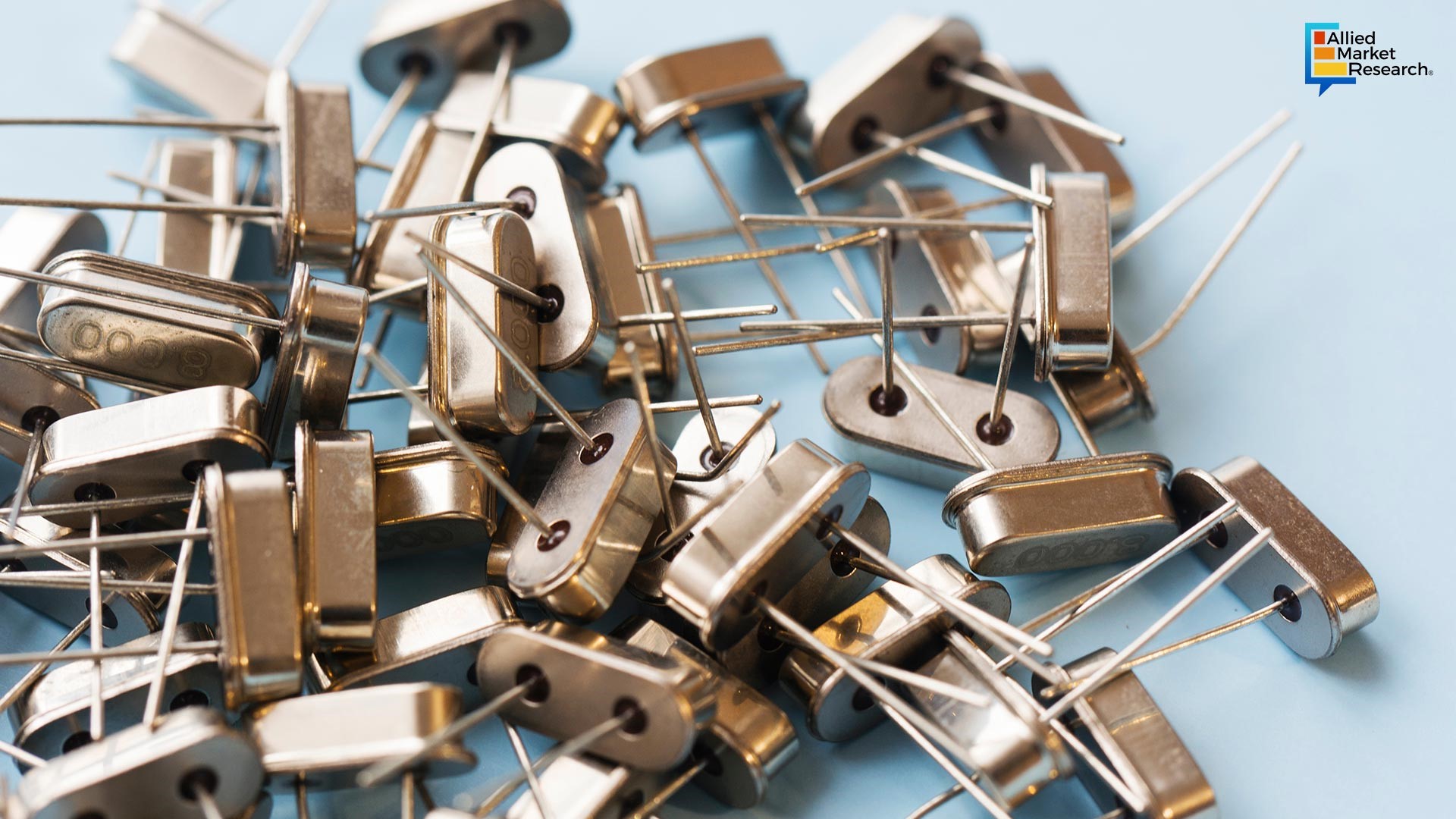Investigating the Role of Timing Devices in Revolutionizing Various Electronic Technologies

12 Mar
2024
Highlights:
- Introduction
- Applications of frequency control devices in the healthcare sector
- Role of frequency control devices in transforming the automotive industry
- Product launches and alliances in the domain
Smart consumer electronic devices rely on precision and accuracy; hence, modern electronic devices rely on components that transmit or receive electric signals at the right intervals. The role of transmitting electronic signals in a synchronized manner at the right speed is performed by timing devices. For this, these devices generate an oscillating signal that produces stable frequencies at regular intervals to control the functions of electronic circuits. Owing to this role, these components are known as frequency control devices.
Frequency control devices are primarily made from ceramics or quartz crystals. Though the working principle of both these materials is the same, there are some variations in their physical characteristics. Quartz crystals offer a higher temperature stability and accuracy than ceramic components. On the other hand, ceramic components offer higher electrostatic discharge and shock tolerance. These physical characteristics define the applicability of frequency control devices accordingly. For example, ceramic frequency control devices are used in microcontrollers in which maintaining stability is not paramount.
How has the use of timing devices improved the efficiency of medical and healthcare devices?
One of the most vital applications of frequency control devices lies in the healthcare sector. In the case of medical devices, the accuracy of measurements is extremely important, which is why most electronic equipment used for medical purposes incorporate advanced timing devices. Medical devices, such as electronic thermometers, blood glucose meters, and blood pressure monitors, take the help of frequency control devices for accurate measurements.
Furthermore, frequency control devices find applicability in advanced medical technologies such as computed tomography (CT) scanning and positron emission tomography (PET). Since these medical devices and technologies closely interact with the physiological processes of the patient, they need to offer accurate results. Hence, to synchronize with the patient’s physiological processes, they integrate frequency control devices for measurement precision. Owing to the surge in adoption of timing devices by the medical sector, the healthcare segment is anticipated to rise at a CAGR of $484.9 million in the 2022-2032 timeframe.
How has the automotive manufacturing industry benefited from the adoption of timing devices?
The advent of advanced automobile technologies such as autonomous driving, in-vehicle ethernet, and Advanced Driver Assistance Systems (ADAS) has mandated the use of modern frequency control devices. Micro-electromagnetic systems (MEMS), which are powered using frequency control devices, are important components of modern automobiles. MEMS technology is widely used in automotive pressure sensors that detect the presence of gases or liquids in the vehicle. Along with this, MEMS technology is employed in rollover detection, automotive dynamic control, electronic parking braking systems, and vehicle navigation systems.
For example, gyroscopes, powered by frequency control devices, form an essential part of automotive navigation systems. While GPS technology plays a vital role in determining the position and altitude of the vehicle, gyroscopes are instrumental for ascertaining the direction in which the vehicle is moving. Owing to such a pivotal role played by frequency control devices, the automotive segment is expected to gather a revenue of $1,552 million by 2032.
How have private companies adapted to the changing dynamics of the industry?
The timing devices industry has evolved tremendously in the past few years owing to advancements in semiconductor technologies. To establish their dominance in this changing industry, private players have formulated different strategies. In the past few years, several companies have formed alliances to enhance the scope of their operations. For instance, in July 2023, Abracon, a major frequency control devices manufacturer, announced the acquisition of NEL Frequency Controls, Inc., a crystal oscillator manufacturing company. Abracon released a statement stating that the acquisition is expected to help the company to invest in innovation and expand its product portfolio.
Similarly, in November 2023, SiTime Corporation, a precision timing equipment manufacturer, announced the acquisition of Aura Semiconductor, a leader in semiconductor manufacturing. The acquiring company, i.e., SiTime Corporation released a statement saying that the acquisition is expected to help the company to increase its foothold in the industry in the coming years.
While some companies have engaged in establishing alliances with their peers, other private players have invested in R&D activities and launched their products to gain a competitive advantage. In April 2023, Euroquartz, a major crystal oscillator manufacturing firm, announced the launch of Statek MTXO tight stability frequency oscillators. With a fundamental frequency range of 10 to 50MHz, these oscillators have witnessed huge demand from the telecommunications, defense, and aerospace industries. Euroquartz released a statement saying that the product launch is expected to help the company fulfill the demand of these end-use industries effectively.
To sum it up, frequency control devices have experienced a major surge in applicability in different end-use industries including healthcare and automotive sectors. From medical devices such as glucometers to automotive technologies such as ADAS, timing devices have ushered in a new age of electronic technologies. With private players launching their products and engaging in alliances, the sector is expected to strengthen its position in the years to come.
To get an in-depth analysis of the growth drivers and investment opportunities in the sector, feel free to contact us.

Akhilesh Prabhugaonkar
Author's Bio- Akhilesh Prabhugaonkar holds a bachelor’s degree in Electronics Engineering from the reputed Vishwakarma Institute of Technology. He has a special interest in the fields of forensics, world history, international relations and foreign policy, sports, agriculture, astronomy, security, and oceanography. An ardent bibliophile and melophile, Akhilesh loves to write on topics of his interest and various other societal issues. This love for writing made him enter the professional world of content writing and pursue his career in this direction.
Avenue: Entire Library membership of Allied Market Research Reports at your disposal
- Avenue is an innovative subscription-based online report database.
- Avail an online access to the entire library of syndicated reports on more than 2,000 niche industries and company profiles on more than 12,000 firms across 11 domains.
- A cost-effective model tailored for entrepreneurs, investors, and students & researchers at universities.
- Request customizations, suggest new reports, and avail analyst support as per your requirements.
- Get an access to the library of reports at any time from any device and anywhere.
Related Post
-
How are Submarine Cables Transforming Global Connectivity with Enhanced User Experience?
-
Endoscopy Procedures: Transformations in Techniques and Applications
-
AI-Powered Video Analytics: How the Product Actually Works for enterprises
-
Painting Robots: Transforming Precision Coating and Creative Applications
-
Innovations in Pharmacovigilance Systems Advancing Patient Safety
-
Understanding Edge Security: Keeping Data Safe Near the Source
-
Exploring the Use and Advancements of 3D Laser Scanners in Professional Applications
-
Reinforcing Industrial Controls with Smarter Tools and Training








